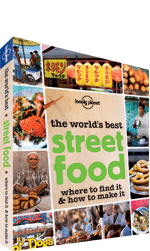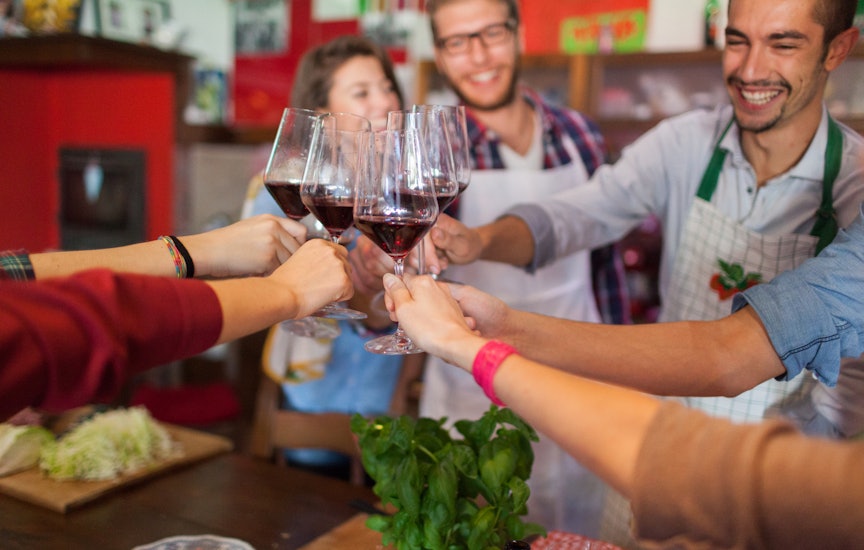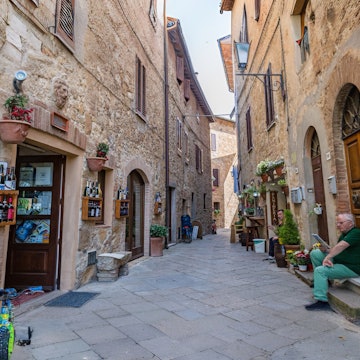

Rule number one, and the only rule worth remembering if you don’t have time to read the rest of this article, is don’t judge a restaurant in Italy by its decor. It’s as simple as that. In this foodie heaven of a country, brilliant fare can be served in the ugliest of surroundings.
If you want to know more, the variety, the quality, and the sheer depth and range of eating are something most countries can only dream about. While there are plenty of options on where to eat throughout Italy, the beauty is that most eateries have clearly defined roles. So all bars will serve coffee and brioche (pastries) as well as drinks. All osterie will provide you with a reasonable meal in unpretentious surroundings, and all pizzerie will sell you a pizza. Because of this focus, the number of places where you can find something to eat and drink is large. Each establishment doesn’t try to be all things to all people, but rather concentrates on doing their (often simple) thing well.
No matter where you go, the first thing to do is show you’re human. A “Buongiorno” or “Buonasera” is the basic greeting in any shop, bar or restaurant. In a bar/caffè, you’ll probably have to pay for what you want even before you order it. Look around for a cash register (often away from the bar) and keep your receipt to take to the bar with you.
In a restaurant, the usual first offer of the waiter is “Cosa vuole da bere?” meaning “Do you want a drink?”. No matter how it sounds, it doesn’t mean do you want a beer.
Always keep your receipt when you pay for anything, including a meal in a restaurant, until you have left the premises. The much feared Guardia di Finanzia (financial police) are very strict and you can be charged if you don’t have a receipt when you leave. So make sure you are given one (“Ricevuta, per favore” or “A receipt, please”) and hang on to it. The business can also be fined, so it’s in their interests for them to give you one.
Agriturismo
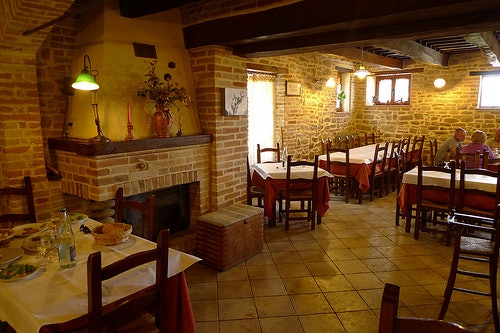
Image by pizzodisevo
All over Italy, working farms are set up as what are known as agriturismi. While many sell their goods and offer a unique, very worthwhile option for accommodation, many also serve meals (some serve meals for lodgers only). Look for the characteristic green and gold signs in the country, marked with a knife and fork, and you could be eating the kind of food that the farmer’s wife has been cooking for her family for years. Agriturismi are generally quite cheap, usually unrefined (but sometimes awesome), and tend to typify what is actually eaten by locals. Most are open for cena (dinner) only.
Bar/Caffè

Image by bruno brunelli
The single most common place to find something to eat and drink is the bar (sometimes called a caffè bar). Bars are tremendously popular hangouts, mostly serving coffee, soft drinks, juices and alcohol. They’re open from early (some from about 6am) until quite late (about 10pm). The food is essentially simple – including brioche, pre-made panini (bread rolls) with light fillings, and tramezzini (crustless sandwiches). They also serve spuntini (snacks) to have with drinks, such as olives, potato crisps or little slices of frittata (like an omelette) that you eat with toothpicks. A good bar usually has very professional, often gorgeous staff. Some pasticcerie also sell coffee, but their focus is firmly on bread and pastries.
Birreria
Birreria is a bar that specialises in selling beer, usually seen in central and northern regions and often in conjunction with another title such as Caffè. In the far north, don’t be surprised to see someone – okay, it’ll be a man – leaning on the bar and drinking a beer for breakfast.
Frasca/Locanda
Friulian wine producers open their doors and provide a place to drink and often sell food to fire the engine. Most are open in the evenings only, many until quite late.
Osteria
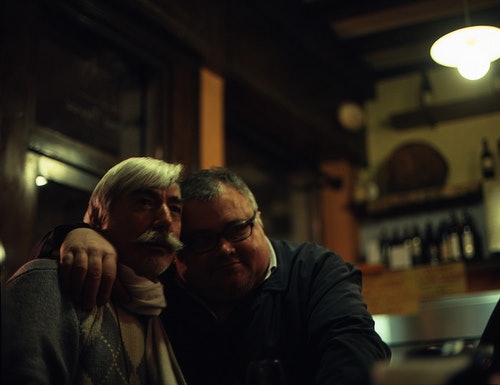
Image by bushpig [goph51]
This is the classic eating house that in many ways epitomises Italy. Osterie were originally family-run places for locals to drop by and have a drink, a snack and perhaps a little gamble at the end of the day. Typically this would have been a drinking hole for men. Over the years the osterie started serving food, as their customers craved more than just good company and local wine to satisfy their souls. These days, many osterie will still serve you just a drink, if that’s all you want. But their focus is very much on simple food that is relevant to their region, usually with a verbal menu. Many osterie are open at nights only, but most open for pranzo (lunch) from 12.30 until 3pm, and again for cena (dinner) from 7pm until late. You can push all these times back the farther south you travel. While a few flashy (and flashily priced) ristoranti have used the name osteria to give an impression of rustic beginnings, most osterie are still relatively cheap and one of the absolute joys of dining out in Italy.
Paninoteca
Roughly translated as bread roll (panino) place (-teca), the paninoteca is really a specialist sandwich shop. Even the simplest of fillings (for example,prosciutto, preserved ham, with no other spreads) can be a joy to eat. Most paninoteche are open during normal daytime hours.
Pizzeria

Image by Allerina & Glen MacLarty
It’s self explanatory – a pizzeria sells pizze. Many pizzerie also act as trattorie (reasonably priced eating houses) during the day, and light the wood-fired oven for evening trade only. Pizza a taglio means pizza by the slice, the style popularised in Roma. No-one, no matter what they have visited Italy for, should miss eating real Italian pizza at least once.
Polentaria
Not often seen, it’s the name of a specialist restaurant for making polenta. As polenta is a northern dish you will only see a polentaria north of Emilia-Romagna.
Ristorante

Image by Kieran Lynan
A ristorante (restaurant) implies an eating establishment that is more sophisticated than a trattoria or an osteria, with correspondingly higher prices. Printed menus take the place of verbal ones and flowers could be (but probably won’t be) fresh instead of plastic. By definition the food should be more refined, served with more care and be matched with an equally decent wine list. As the name implies, a ristorante should also restore the body, although a mere name is no guarantee of any of this.
Spaghetteria
A simple place originating from the former street-stalls of Napoli that sold just bowls of spaghetti with a choice of sauces. Spaghetterie are slowly falling from favour. The name implies no-frills but generally delicious pasta and secondi (‘second’ or main course) with correspondingly low prices and normal restaurant hours.
Tavola Calda
Literally a ‘hot table’, a tavola calda serves mostly pre-made food that you queue for, usually with a tray, cafeteria style. It isn’t, however, anything like the cafeteria that most English-speaking nations know, full of drying casseroles and deep-fried food. The tavola calda is usually a showcase for the local foods, some of which are reheated to order (rarely in microwaves), along with pizza a taglio, carni arrosti (roasted meats) and insalata (salads). Most are open all day from about 11am.
Trattoria
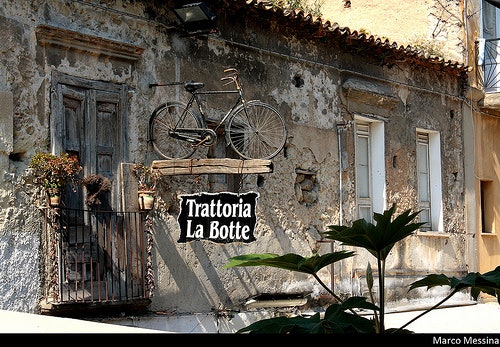
Image by Mexx 600
A trattoria is often family run, and very similar to osterie in many respects, including the reasonable prices. The cucina is less complex than in ristoranti, the service less aloof and usually more amiable, and things like finesse take a back seat to the honest and heart-warming. Really great food cannot always be guaranteed, but you’ll be impressed by how often it is.
This article was updated in Jan 2012.
